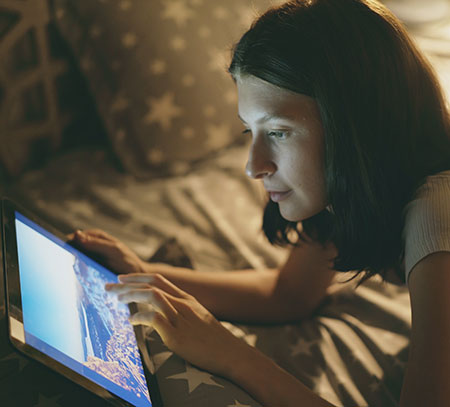 The Lighting Research Center (LRC) has published the results of a study investigating the effectiveness of Apple’s Night Shift for lessening the impact of nighttime iPad use on melatonin suppression, a marker of the circadian system. Night Shift permits users of Apple’s portable electronic devices (PEDs)—notably the iPad—to change the screen’s color to “more warm” (less blue light) or “less warm” (more blue light), without necessarily changing its brightness.
The Lighting Research Center (LRC) has published the results of a study investigating the effectiveness of Apple’s Night Shift for lessening the impact of nighttime iPad use on melatonin suppression, a marker of the circadian system. Night Shift permits users of Apple’s portable electronic devices (PEDs)—notably the iPad—to change the screen’s color to “more warm” (less blue light) or “less warm” (more blue light), without necessarily changing its brightness.
Led by Dr. Mariana Figueiro, the study examined 12 young adults viewing iPads between 11 p.m. and 1 a.m. on four separate nights under four experimental conditions: (1) deliberate melatonin suppression via blue light intervention, (2) dim light with goggles filtering blue light (control), (3) at the extreme warm (2837K) Night Shift setting, and (4) at the extreme less-warm (5997K) Night Shift setting. Results showed that all three non-control lighting interventions significantly suppressed melatonin over the two hours of each study night. More importantly, there was no significant difference between the effectiveness of the two Night Shift settings. The main takeaway is that changing screen color alone is insufficient for limiting the impact of PEDs on melatonin levels in the evening, and that screen brightness should also be reduced. The full study, published by the peer-reviewed journal Lighting Research & Technology, is available at http://journals.sagepub.com/doi/abs/10.1177/1477153517748189.

